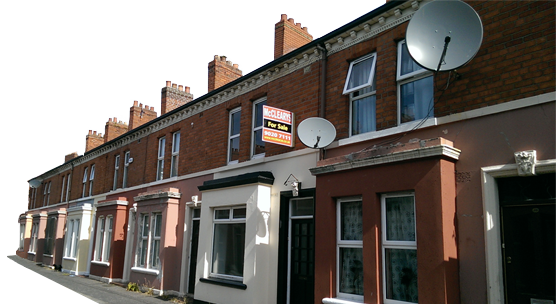Insurance for property with a flat roof can cause problems with some standard insurers as a flat roof is considered as non-standard construction.
With good reason, some insurance companies are not keen on providing cover for property with flat roofs due to their increased likelihood to leak which will cause damage to the roof and to the room full of insured contents, below.
Flat roofs are commonly used to save money on construction costs. It is cheaper to construct a flat roof than it is a pitched roof with traditional slates or tiles. Use of a flat roof can also help with planning regulations as the height of a flat roof is lower than a pitched roof which may be less offensive to neighbours, planners in some circumstances.
There are several types of flat roof covering, the most commonly used in the UK is mineral felt. This mineral felt is probably what gave felt roofs their bad name as typically they are not maintained, they often ‘pool’ water at their lowest point which causes damage to the felt and it will eventually leak. If the roof is not constructed with the highest degree of competence then it will fail at some point leading to ingress of water.
Insurance companies will not pay for damage that is caused by a worn out or poorly maintained flat roof. Nor will they pay for shoddy workmanship so if you have a flat roof, it pays to get it checked and properly maintained.
A ‘flat’ roof always have to be completely flat. They will sometimes have a slight pitch to it with the rainwater goods catching the water and transporting it away from the building. This stops pooling of water and is the quickest way of removing the rainwater from a flat roof.
The new kid on the block is EPDM (Ethylene Propylene Diene Monomer). Actually it has been used since about 1970 in the USA but more recently it has seen significant improvements and is becoming more commonly used in the UK. It has the benefit of lasting about 40 years so significantly outlasts the mineral felt roof. This roof is an extremely durable synthetic rubber roofing membrane and although is still ‘non-standard’ as far as most insurers are concerned, most will accept it at standard policy terms. You must still tell your insurer you have an EDPM roof though or they could use it as a reason not to pay a claim due to non-disclosure of a material fact.
Asphalt is another commonly used roofing material. Don’t get this one confused with mineral felt. Asphalt is NOT the same as mineral felt. Asphalt is laid hot onto the roof and should have stones or chippings which help protect against the extremes of temperature during the summer and winter. Some insurers regard asphalt as ‘standard construction’ so, depending on their definition, wouldn’t need to be disclosed to them. Mineral felt on the other hand is non-standard so would need to be disclosed to the insurer.
When disclosing the flat roof details to the insurer you will need to advise them of the approximate percentage of the overall flat roof that is flat, the type of roof covering, i.e. EPDM, mineral felt, asphalt, concrete, fibreglass etc, how old the roof is and when it was last maintained.




